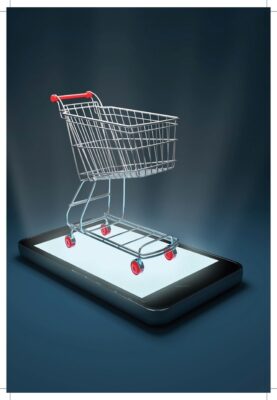
Customer Experience – Can’t win @ Broken pieces
Circa 1220, Samarkand, Fall of the Khwarzmian Empire1
The stallion stood on the hind legs neighing louder in a euphoric exaltation. The rider balanced himself standing on the stir-up leaning forward. He wiped off the sweat and blood from the forehead layered with dust and glanced back with the swagger of a victor. The intense piercing look scanned the organized columns of his troop. They were an ocean till the horizon as much he could stretch his vision.
The twilight sky was dyed crimson with the Sun casting the last rays of the day.
His mind flitted to the past when he was young Temujin. His father was poisoned by the enemy and their nomadic life was in tatters. The best they could eat was wild fruits and carcasses if they were lucky. But he dreamt that he will be the winner someday. He dreamt that he was an eagle and would conquer the world with the sweep of his wings.
Today, with the fall of the Khwarzmian Empire, he has won the biggest victory of his life.
The battle was over as he expected. He glimpsed at the fallen army of the Shah. An eerie malevolent air passed him carrying the howling of the vanquished in front of him. The red mist risen from the splattered blood of the dead and the wounded was crawling up to the sky.
He knew, today he was the Scourge of God, the mighty Genghis Khan.
Genghis looked at both the flanks. His trusted generals Muqali, Jebe and Subutai smiled at him brandishing their swords in the air. He smiled back at them raising his sword as well and commanded them to follow him to the city gate to enter.
Genghis knew, history will not write about him, rather it is he who has crafted the history for generations to talk about. He knew many would write about him, and paeans of his success will be sung over the millennium.
The mighty Khan smirked a mysterious one. Because he only knew the key to his success. He knew it was Yassa.
Yassa and other winning frameworks1
Yassa was a secret written code of law created by Genghis Khan. The term Yassa literally translates to ‘Order’ or ‘Decree’. Yassa first comprised the decrees issued during wartime and later incorporated the social and cultural customs to be followed as well. In short, it was a framework and Genghis Khan himself supervised the creation and implementation of Yassa. And the result was obvious – it was his army characterized by agility, discipline and speed making them invincible.
If one looks back, each successful ruler depended on some framework to succeed. For instance, an indomitable army of Alexander depended on structures called Phalanx and Hypaspists.
Turning the clock forward, even the winning corporates today, though subtle many times have reckoned on some framework to succeed. Citing the example of Google, the most successful organization today, they depends on eight Innovation Pillars.2 This comprised drivers like Mission, Thinking big-Starting Small, Continual Innovation-Not instant Perfection, Looking for ideas everywhere, Sharing everything, Spark with Imagination-Fuel with Data, Be a Platform, and Never Fail to Fail. Similarly, the success of Apple often, is attributed to what is adduced as Innovation Factory comprising drivers such as Network, Partner, Process, Culture and People.3
This brings us to a point where it becomes imperative to examine how much an integrated framework can ensure excellence in Customer Experience Management from the perspective of the current business environment.
For that, it is critical to peek at the current context of Business and Customers.
Current context – how is the business landscape and what do Customers want4
The socio-business environment of today can be appropriately paraphrased by this quote from Charles Dickens – ‘it is the best of the times, it is the worst of the times.’ The current digital universe is characterized by two phenomena:
Speed of Digital Evolution – Moore’s Law
The digital revolution in terms of processing speed and degree of connectedness are two vital factors that significantly influence the competitiveness of a firm. As per Moore’s law, digital processor speeds, or overall processing power for computers will double every two years.
Technology Adoption Time
Technology adoption time has reduced drastically in the case of digital, or more in the case of Internet-based products. For instance, reaching a diffusion of 25 per cent (per cent of ownership) radios took more than 25 years. However, in case of the Internet, it took even less than 10 years to reach the same figure.
Talking about Customers, there are three distinct phenomena that can be observed
Increasing importance of Customer Service5
According to American Express Global Customer Service Barometer 2017, there is an emerging trend of the importance of Customer Service when deciding to buy a product. Following is a country-wise graphical representation of the percentage of Customers who hadn’t bought a product due to bad Customer Service

Good Customer Service – More Spend5
The following illustration depicts the average percentage willing to spend more because of excellent Customer Service

Shift towards online channels6
There is a gradual shift toward Customer resorting to online channels for resolution as depicted in the following diagram. This represents the percentage of Customers who have used online channels for problem resolution.

This has rendered a Customer who is more demanding and has umpteen choices. His degree of wanting the Right Product Now for Free has increased manifold.
In this context, it has become imperative for firms to create a Customer Experience that is fast and easy to adopt. This adjures that an organisation can’t deliver Customer Experience @ Broken Pieces and needs an integrated model rather than picking up traditional discrete areas.
CEMEX (Customer Experience Management Excellence) – 9c3i framework delineated below is such an integrated framework that has been formulated based on rigorous industry research, discussion with experts and application with success.
CEMEX – 9c3i framework
CEMEX – 9c3i is a generic integrated framework for Customer Experience Management (Refer Fig below).

PREMISES
The framework works on the following premises:
- Customer Experience needs to be created across LIFECYCLE
- The OBJECTIVEs are the opportunities to create a stream of experiences at various points within lifecycle culminating in CRESCENDOS (=Where Customers experience the maximum delight)
- Defined INTERFACES with internal functions provide the impetus to a seamless experience
- ACCELERATOR of the framework is an Analytics system
- BASE of the model are People (Capability and Engagement)
Lifecycle and Objectives
The Lifecycle comprises three stages. Objectives are the opportunities
Convert
This involves creating the Onboarding Experience. The experience aimed to be created across three stages. First is communicating which is about communicating the product information to the Customer. Commit comprises decision on product specification. Initiate is the CRESCENDO of this stage and starts with sell of the product and culminates in the Initiation of the product.
Care
This is when a customer contacts the firm with his problem. Compile represents the recording of the Customer complaints. Next step referred as Comprehend involves evaluation and analysis of the complaints. Illustrate is the CRESCENDO in this stage. Illustrate is beyond resolution and comprises two components – (a) Resolution, (b) Close-looping and Illustration to stop further complaints
Coddle
This is when the customer is contacted proactively and resembles a feedback loop. The first point of experience creation in this stage is Contact which is Proactive contact with the Customer. The second point Collect comprises the collection of customer views and analysis for implementation. Integrate is the CRESCENDO. This comprises (a) Evaluation, (b) Integration with the process
Measure
Each stage comprises two metrics, one Business Metric and another Experience Metric to measure the effectiveness of the framework. These are delineated below. It is important to note that these are reflective metrics and an organization can decide similar one to reflect the essence. For example, Set-up time represents the time from buy to product activation. Quoting an instance from a telecom company, for a B2C Customer, it may represent % of new connections activated within the agreed time frame. For a B2B situation in telecom, this may reflect the time from receiving the order to installation. The indicative list of the measures is as follows:
- Onboarding
- Business Metrics – Conversion
- Experience Metric – Set up time
- Experience Management
- Business Metrics – Repeat Sale
- Experience Metric – Defect Rate
- Relationship Maintenance
- Business Metrics – Retention
- Experience Metric – Referral
The overall effectiveness of the framework can be measured by the following metrics
- Business Metrics – EBITDA
- Experience Metric – TNPS
Interfaces
Interfaces refer to the functional interfaces to be defined at each stage. It is recommended to define the functional interfaces along with the roles in each stage (Please refer to the Case below for example).
Accelerator
Integrated horizontal analytics (non-vertical) need to be created that feed the output back to the relevant lifecycle stages for action and integration.
Base
People provide the base. This should be ensured in two parts. The first one is the Capability to match the changing requirement. The second one is Engagement which comprises keeping the people engaged and motivated to the bigger cause.
Case Study
CEMEX is an industry-agnostic strategic framework. Following is an illustration of how the performance has improved in a particular firm with the application of this framework. This is for an ICT set-up with more than 12 million customers.
Lifecycle, Objectives, Measures and Function Interface
This is illustrated in the following table for Convert – Communicate. Other combinations can be developed similarly. This is considering a B2B scenario.

People
People capability plan was done across spans and layers. Both Technical and Behavioral capabilities were developed. For engagement, dedicated cross-functional groups were created to drive belongingness.
Analytics
A structured analytics system was developed to create any analytics across the Customer Lifecycle. Termed as the 3-Click Approach, it aimed to retrieve any analytics with minimum clicks, ideally 3.
Result
The result was exemplary. The following illustrates the result over a period of approximately 7 quarters.
- Set-up time has improved by 52 %
- Defect Rate (Complaints per Customer) reduced by 19 %
- Retention has improved by 39 %
At the apex (business) level, the following two metrics were tracked and had shown desired results
- Net Promoter Score has improved by 94 %
- The cost has been reduced by 30 %
People’s Satisfaction score was also measured and was at 98 %
Is it the perfect framework to drive Customer Experience4
The framework has been tested in a few organisations across industry sectors and has proved to be substantially industry agnostic. The strength of the framework also lies in the fact that, a firm can choose to use the framework in parts or as a whole. The author doesn’t claim this to be the perfect panacea – further research can definitely fine-tune the model. However, for an organisation to drive Customer Experience, the framework is pragmatic enough to create a linkage with business strategy, as well as to assure business results.
Lastly4 ………
Customer Experience is complex and putting it within a structured ambit is always challenging. While a framework like this provides generic guidance to help an organisation to become pragmatic by focusing on the right ingredients, it further entails consistent effort, smart work, and being creative beyond a defined boundary.
If this analogy can be brought here, this is similar to cooking with a recipe – while many people can follow the same recipe, the taste is never the same.
(Disclaimer: The views expressed in the article is of the author’s and doesn’t reflect the views of anyone else including the organization he is working for)
References
- Wikipedia
2.http://www.forbes.com/sites/haydnshaughnessy/2013/03/07/who-has-the-winning-innovation-model-google-apple-or-samsung/
- http://www.innovationmain.com/Apple-eBook.html.
- Borah Gautam (2015): Monetising Innovation: Bloomsbury, New Delhi p. 74
- American Express Global Customer Barometer, 2017
6.http://tech.economictimes.indiatimes.com/news/corporate/indians-most-savvy-about-using-customer-support-tech-america-express-survey/57764177

